|
|
For many developers, the satisfaction of making software products lies in creating genuinely useful things for people (all from the comfort of your home office or local coffee shop 😉).
Mike Nelson’s philosophy is no different. After working at a WordPress agency, he started a local WordPress meet-up where one participant posed a simple question: How could they preserve their blog and make it printable? And so — to cut a long story short — the idea of Mike’s plugin Print My Blog was born.
What makes Mike’s story relatable to many of our readers is that he still holds down a day job while running his plugin on the side. For many software creators, the reality is that their business has not yet reached the point where they can consider moving to full-time.
But — as you’ll discover in this Success Story — working a nine-to-five job while building a passion project can be both rewarding and a source of significant side income.
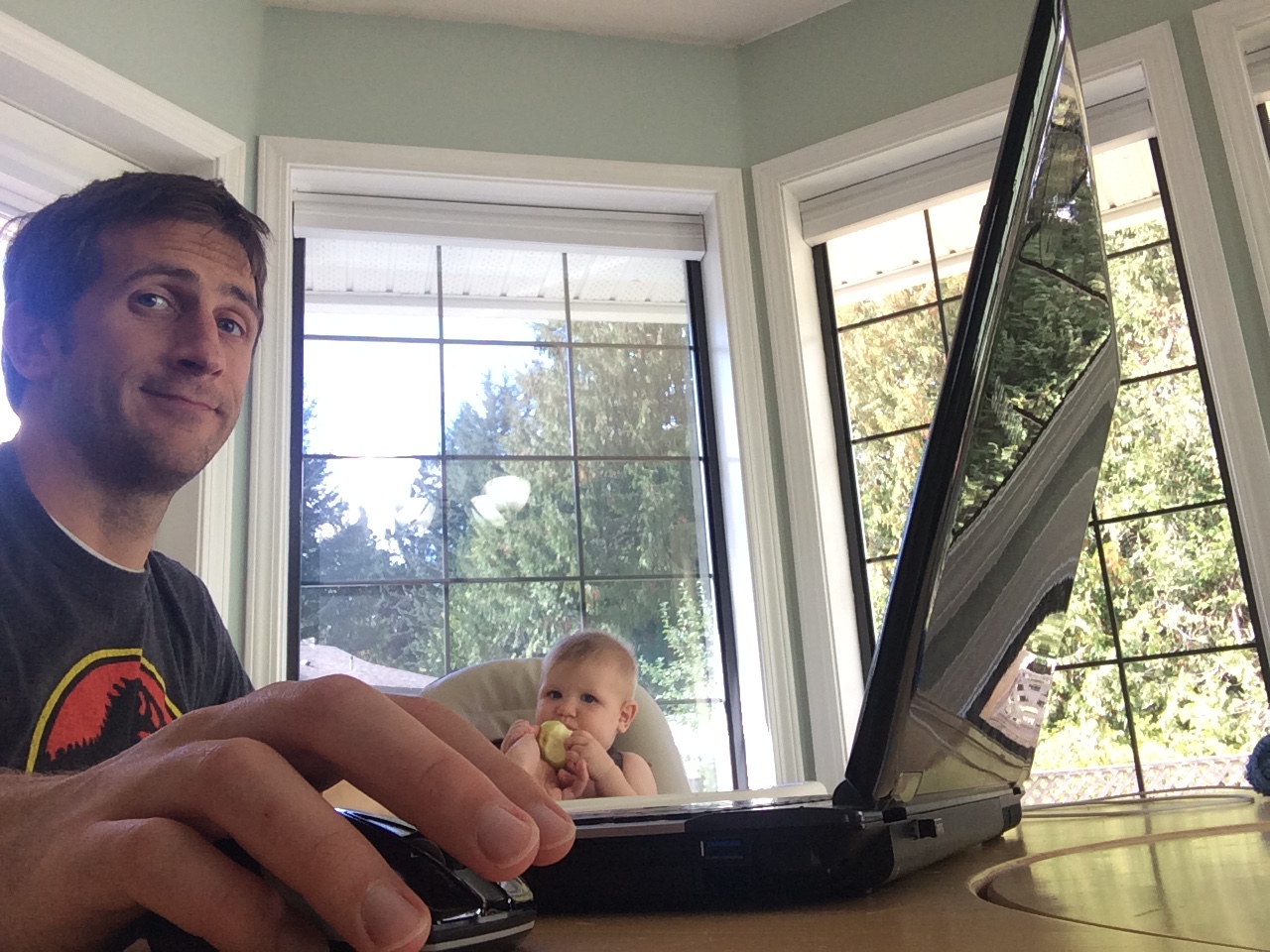
Hi Mike — welcome and thanks for joining us! Your LinkedIn profile shows you want to change the world with your software applications. Please tell me more about this aspiration.
Hi Robert! Thanks so much for having me.
First off, my LinkedIn profile is a decade or more old and I probably wrote that fresh out of university and about to “conquer the world”. These days, I mostly just want to empty my inbox, make some sales, and fix the leaky toilet…
But I’ll be honest, a part of me still has that grand aspiration to change the world for the better — preferably without having to get out of bed or talk to too many people 😅
Seriously though, helping people through my software is my way of doing this as I find it fulfilling and enjoyable.
It’s fantastic you’ve found something that gives you that level of purpose. I’m also interested to learn more about Mike: your interests, hobbies, etc.
This is probably in the wrong order, but here are some things I love:
- Pizza
- Tacos
- Pizza tacos (it’s a taco but replace the tortilla shell with a slice of cheese pizza 🤤)
- My family and our pigs (we have a small hobby farm with Kunekune pigs, which are the same breed as Pua the pot-belly pig from Disney’s Moana)
- Family history aka genealogy technology (which I’ll touch on later)

Regarding the last point: In college, I got a fun job as a research assistant where I made a Facebook app to determine how you were related to your Facebook friends. This was more than a decade ago, back when Facebook did “apps” and most of us hadn’t heard the word “privacy” before.
But by some stroke of luck and quite a lot of hard work, it got featured in the school’s newspaper and people started to try it out. Practically overnight, almost everyone at college was using it.
It was awesome. The server crashed because it had to accommodate so many users. It snow-balled because it got more interesting the more friends you had who used it.
The big takeaway for me?
My idea was cool, but I needed help spreading the word and getting initial users. Many WordPress plugins are in the same situation now: even with a great tool, getting the first handful of users is probably one of the most difficult aspects, and it helps to have some connections or guidance.
💯! You have an extensive background in WordPress and software development. What got you into the industry?
The main reasons:
- The tech industry is small where I live but I didn’t want to move
- The pay is better than the local web agency I was at
The long story:
After studying computer science in the USA, I met a girl in Canada so I moved back up to Victoria, B.C.
I struggled to find my first real off-campus job and wound up at a small but hip web development agency. While they didn’t specialize in WordPress, it became their go-to tool for making websites, especially for real estate clients.
The pay was pretty meager, though.
I saw that a WordPress plugin business — Event Espresso – was looking to hire so I tried my luck. It turned out the owner and I went to the same college, and they paid nearly double my previous income. To top it off, I got to work from home!
Nice. Have you observed any significant changes in the ecosystem since then?
Regarding what’s changed in WordPress: I had a big, political soap-box reply that I’m pretty sure would have bored your readers. So I’ll highlight one change that positively affects my plugin — giving users the tools they need to be designers.
A decade ago, it was nearly impossible for a site owner with no coding knowledge to change something as simple as font color. The block editor has given regular users the power to set font color, background color, font size, pixel-letter spacing, and add a drop-cap, among others. They no longer need a designer.
I’m not sure if it’s an absolute win. I liked the time when users chose a theme for their website and the theme’s designer made all those design choices. I don’t think most regular users are ready for the amount of design choices they’ve been given.
I guess I ended up on a soap box after all. Where were we?
Let’s move on to Print My Blog. What sparked the idea and why’d you prioritize it over other brainwaves you may have had?
In college, I heard the term “the digital dark age”.
It’s defined as “a lack of historical information in the digital age as a direct result of outdated file formats, software, or hardware that becomes corrupt, scarce, or inaccessible as technologies evolve and data decays.”
With my interest in family history, it left me puzzling: how will I preserve my blog and digital stuff for the future?
Years later, I started a local WordPress meet-up, and at one of our meetings, someone asked a straightforward question that tied into what was puzzling me: How can I print my blog posts but not have images split across pages?
I researched and came up with some CSS that kind of worked. It would bump the image to the next page where it fit completely. The issue was that the first page then had a ton of empty whitespace, which was an eyesore. This was another elusive problem that needed a solution.
So I put the two problems together:
- How do I preserve my blog for the future?
- How do I print a blog post so it doesn’t look ugly?
This led me to a simplified question: How do I print my blog?

I wrote about it and one of my fellow WordPress meet-up members — who had readers on her retirement blog — shared it. This generated the critical initial feedback and interest I needed to get started.
Speaking of getting started: It’s interesting to note that there are several competing solutions, yet you still persevered with Print My Blog. What makes it special?
Good observation. I should probably tout my plugin’s features, but that would be boring 😂
Several great plugins and SaaS offerings are superior to Print My Blog in some ways, but I’d like to point out where they struggle and why some folks are left with no better alternative than Print My Blog.
- Anthologize is a plugin created by my WordPress hero Boone Gorges about a decade before Print My Blog. (I can’t help but mention this tangent: he and I have never met, but we made a 2-minute video together titled “You Can’t Just Open a Pull Request and Run”). Anthologize’s initial success and later stagnation both resulted from no income. Because it was free to use, the initial uptake was high. However, a lack of financial resources down the line meant there was little incentive for anyone to continue supporting and improving it.
- MPL-Publisher is another plugin that — frankly — looks a lot better than Print My Blog. Its developer Ferran and I are similar and he has the grit to make it great. I think Print My Blog only outpaced it because of the initial traction generated by having a friend blog about it. Now, my product is in a virtuous feedback cycle: I get feedback, implement it, make Print My Blog better, get more users who give more feedback, etc.
- Designrr is a SaaS tool that has a slick WYSIWYG editor and is probably more successful than Print My Blog. It’s not tied to WordPress, which might be a win overall. But because Print My Blog is tied to WordPress, it integrates with the theme and other plugins more seamlessly. Designrr primarily works with vanilla WordPress.
- PrintFriendly is a plugin that’s mostly just a wrapper around a SaaS and it’s for printing individual blog posts/pages. It’s probably also more successful than Print My Blog because they take your content, ignore your site’s theme, and simply put your content onto a cookie-cutter design. It’s simple and works, but folks who want their printouts to have a unique style or don’t want to have PrintFriendly’s privacy issues end up at Print My Blog.
Thanks for the honesty. You’re also a Chief Information Technology Officer at an education institute. How do you manage a side venture with the stresses and demands of a full-time job?
In all honesty, I don’t 😂
I started Print My Blog while working at Event Espresso. At the time, it was just an amusing side project because it generated no income or business.
Most of Print My Blog’s development happened after I left Event Espresso and was filling a part-time role at Pacific Rim Early Childhood Institute. It was only when I integrated Freemius with Print My Blog that I started to see some revenue.
I joined Pacific Rim full-time about a year ago. Since then, I’ve typically only managed about an hour or two of work on Print My Blog per week (often when the kids are asleep and my wife is watching a reality TV show I’m not interested in).
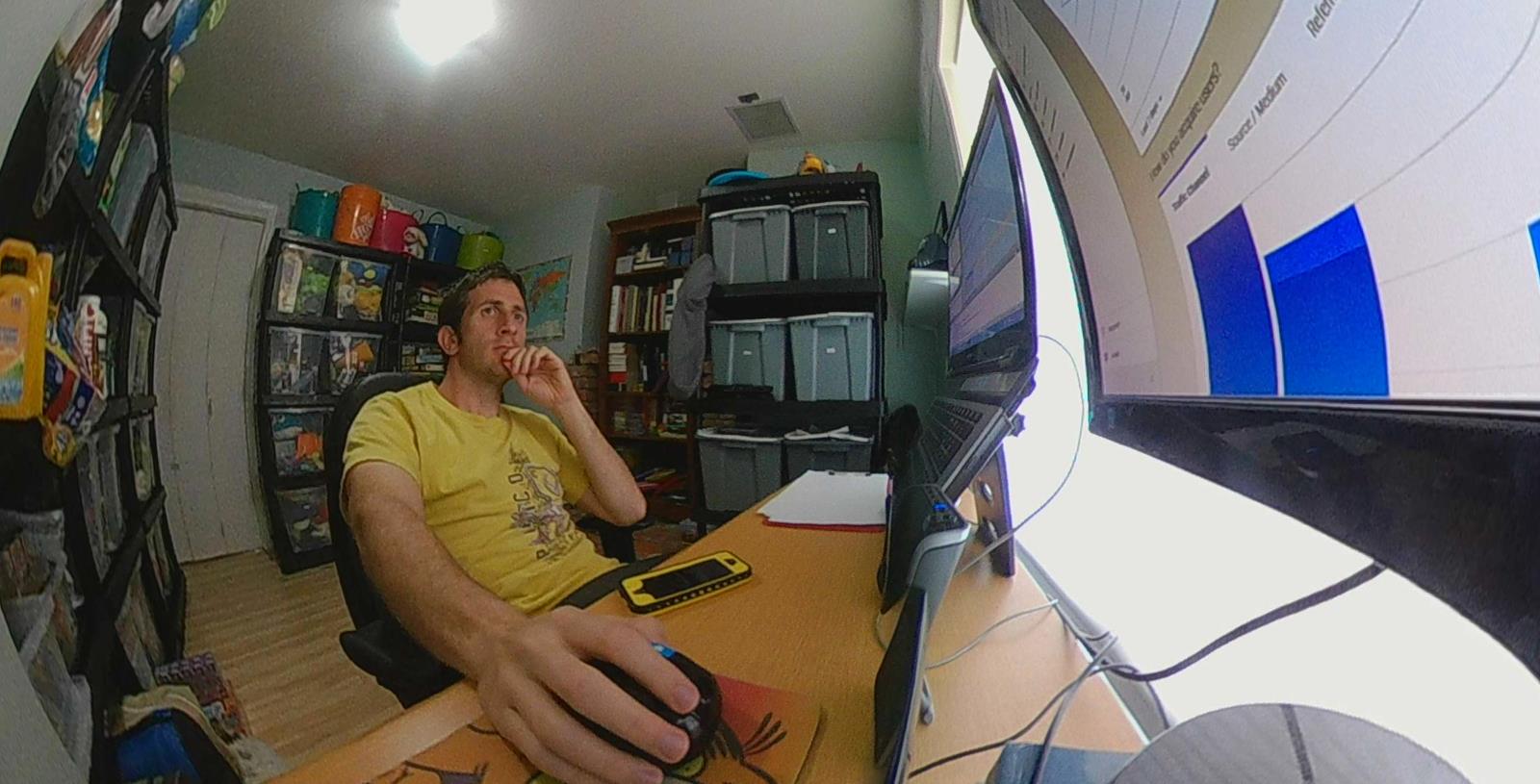
Many entrepreneurs work in an industry before deciding to go it alone. Do you think your previous roles contributed to the success of Print My Blog and is it something you’d ever consider doing full-time?
My previous coding experience with Event Espresso was hugely helpful. The coding side of developing the plugin wasn’t a challenge for me.
Also, they supported me in getting involved in the WordPress community. I contributed code to WordPress core, went to a few WordCamps, and started a local WordPress meetup.
This led to many ideas and connections that helped immensely when I built my business. For example: I discovered that Freemius was better at helping you manage the business side of running a plugin than many similar offerings were.
I’d love to do Print My Blog full-time, but getting started will be tricky: I’m only earning part-time income from it and I’ve learned that time put in != income out in the short term.
If I started working full-time today, I wouldn’t expect to notice a difference in my plugin’s revenue for at least a couple of months, maybe even a year. I could be wrong about that, but it’s my hangup 🤷
Who knows what the future holds? You’re a Django developer too. Has this skill set contributed to the success of Print My Blog (as a WordPress product) in any way?
Only code-wise.
Django is a Python framework. One of the most useful things about it is the “forms” code: you define what fields are in a form and then the form classes take care of displaying it to users and validating their submission.
It then passes the results off to your business logic and model code for saving stuff, processing stuff, etc. If you want to get nerdy, here’s where Django forms-inspired library code is and here’s an example of code that uses it.
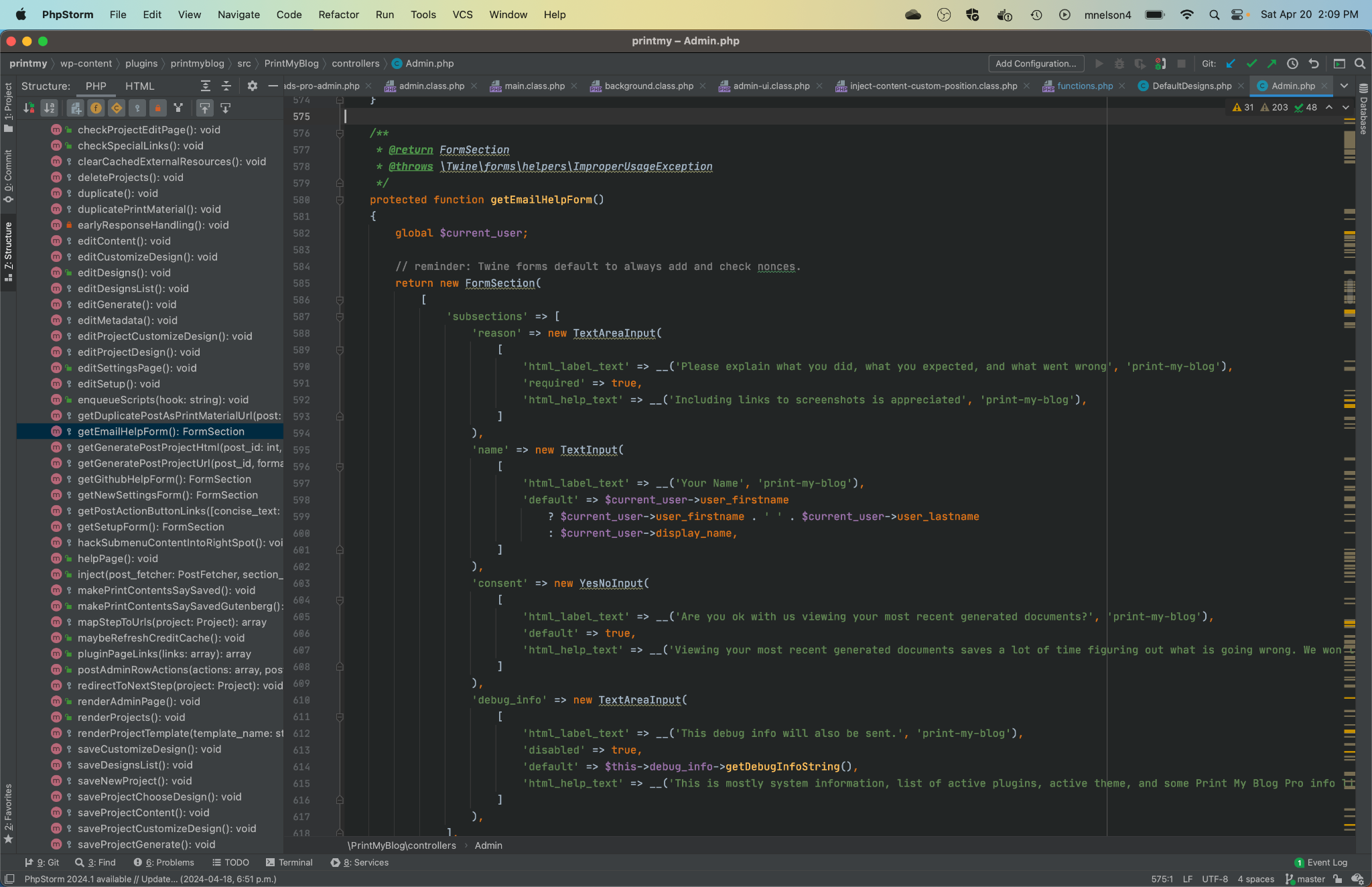
Basically, it’s allowed me to easily add new options to my plugin, which has made it easier to add new features.
What’s it like to wear the hat of an indie developer? Pros and cons? Do you have any plans to hire and grow a team?
I enjoy it a lot.
I like being in control. When a user tells me something’s broken or a certain feature would be great, I don’t need to grovel to the development team to get it fixed, nor do I need to wait for them to find time for it. I just build it and release it the same day.
Then I talk with more users to find out what they need and build that. Plus, I get to do content marketing and tell people why what I built is great.
Of course, the downside to this model is that it doesn’t scale well. I know I should hire help, but my full-time job hired someone for me to manage and I’ve learned that training someone is a lot of work too!
It took three months before I felt like they were saving me more time than I was putting into training, reviewing, instructing, and communicating with them.
Growing pains! Speaking of which — Print My Blog has grown its users to 6000+ active installs. Tell us about how you achieved this success.
I think getting the first 10 active installs of a plugin is the hardest. Only slightly less hard is 100, and likewise 1000.
As mentioned, my plugin idea only escaped obscurity because I made a connection at my local WordPress meetup which resulted in getting initial users and feedback.
Next, I focused on trying to keep the plugin simple and solve a problem.
I’ve also been very lazy.
Being lazy is usually touted as a vice, but when you have too much to do, I think it’s good. I only worked on features that people requested, and I wasted little time on features I thought would be good but nobody wanted.
Let’s move on to marketing. What tools and strategies have helped you grow your audience and your business?
Here’s what worked:
- Making a connection at a WordPress meetup (I helped with some technical stuff on their blog and they shared some of my posts).
- Having an intuitive plugin name.
- Sharing my transparency reports — including income — to wpMail.me, Twitter/X, Reddit, and the Freemius Slack channel’s “Upvoters Mafia”.
- Using Freemius to build my email list and keep subscribers appraised of new developments.
Here’s what didn’t:
- I started a Facebook group for my plugin. There was some initial excitement when people joined and introduced themselves, but it quickly fizzled. I don’t think I do social media very well.
- I presented at WPCampus with the owner of a competing program, PressBooks, but I think there may have only been like 10 viewers.
- I was on the WP Plugins AtoZ podcast. It was a good experience and quite fun, but I’ve never heard anyone mention it.
Putting marketing aside, what would you tell new, aspiring product makers to do and not to do when developing and launching a software product?
Before you begin to develop the software, start building your network. Have a group of people who find your product useful. A good idea isn’t enough if nobody knows about it. And it probably isn’t a good one anyway if no one else thinks so.
Focus on small wins at first. The most difficult milestone for a WordPress plugin is getting the first 10 active installs.
Tip: you can short-circuit this by having 10 sites and then installing your plugin on them yourself.
My plugin was initially freemium for a year or two. Once I learned what features people wanted, I added a paid version. You don’t need to go that way, but you do need to get some initial users who will give you feedback. Some will even be your advocates by giving you reviews and sharing them.
Grab a free copy of our Cheat Sheet for
Selling Plugins and Themes
A growth roadmap with concise, actionable tips for every milestone of WordPress product development.

Let’s get practical. What tools and devices do you rely on and why?
- My plugin actually has a SaaS component, and I have a WordPress website with a few REST API endpoints to take care of that.
- I use DocRaptor to convert the HTML produced by Print My Blog and WordPress into a PDF.
- Mautic and SMTP2GO for emails.
- And lastly, of course, Freemius. I built a plugin that does something cool, but then Freemius takes care of turning that “cool thing” into a business, which is awesome.
Did you use a monetization platform before Freemius?
When I first launched Print My Blog, I envisioned supporting my development entirely through donations.
For that, I used Open Collective. It helped me accept money from folks, but that was it. I also think they took a higher commission than most for-profit services do, which was weird. Anyway, I got no donations using that, so it was a bust.
On the topic of taking a share of the profits: I like that Freemius does that.
First off, there’s no flat fee, so launching a new business with no initial income was free. But having Freemius get a share of the profits makes sense to me. They’re incentivized to help me succeed. It puts us on the same team: either we make money or we don’t, but we do it together.
For example, Freemius’ CEO Vova Feldman listened to my plugin’s offering and gave me specific pricing and business advice. There’s no way I would get that kind of support using WooCommerce to sell my plugin!
Freemius is, of course, a business, but I think they’re making the world a better place too.
They would probably make more money by focusing on the big players, but they don’t. They’re helping all of us smaller developers with getting started, and I think that should be recognized.
It’s fantastic to hear that kind of feedback — thanks 🙏 Which Freemius features support your generous comments?
It’s a complete business solution: you make your plugin, add it to the Developer Dashboard, insert a few lines of code, and voila.
You now have a sales page in your plugin and your users can buy your product. You get money and users get their software and automatic updates. They can also opt in to your mailing list, and you’ve got all this aggregate data on who they are and what matters to them.
There are also several small things that Freemius handles that I wouldn’t have thought of. A few examples:
- Handling support for discount codes
- Letting users opt into your mailing list when installing the plugin
- Deploying follow-up emails that ask for product reviews, request feedback when users uninstall, and enquire about abandoned carts
What role has Freemius played in growing Print My Blog?
One unexpected benefit was that Freemius is centered around subscriptions.
I initially thought I’d just charge folks a flat one-time fee, but Freemius kind of forced me into doing a subscription model.
And it’s been great.
I love getting recurring revenue for nearly no additional work! I’d say about ⅔ of my revenue is recurring now, and that’s after selling the plugin for about 4 years.
Since we’re on the subject: How has Freemius impacted your revenue?
Before Freemius, revenue was like $20/month.
A couple of months after introducing Freemius, it was up to about $200/month.
Now it’s between $1000-$2000.
And like I said, most of that is recurring revenue which Freemius got me started on and handles with almost no effort from me.
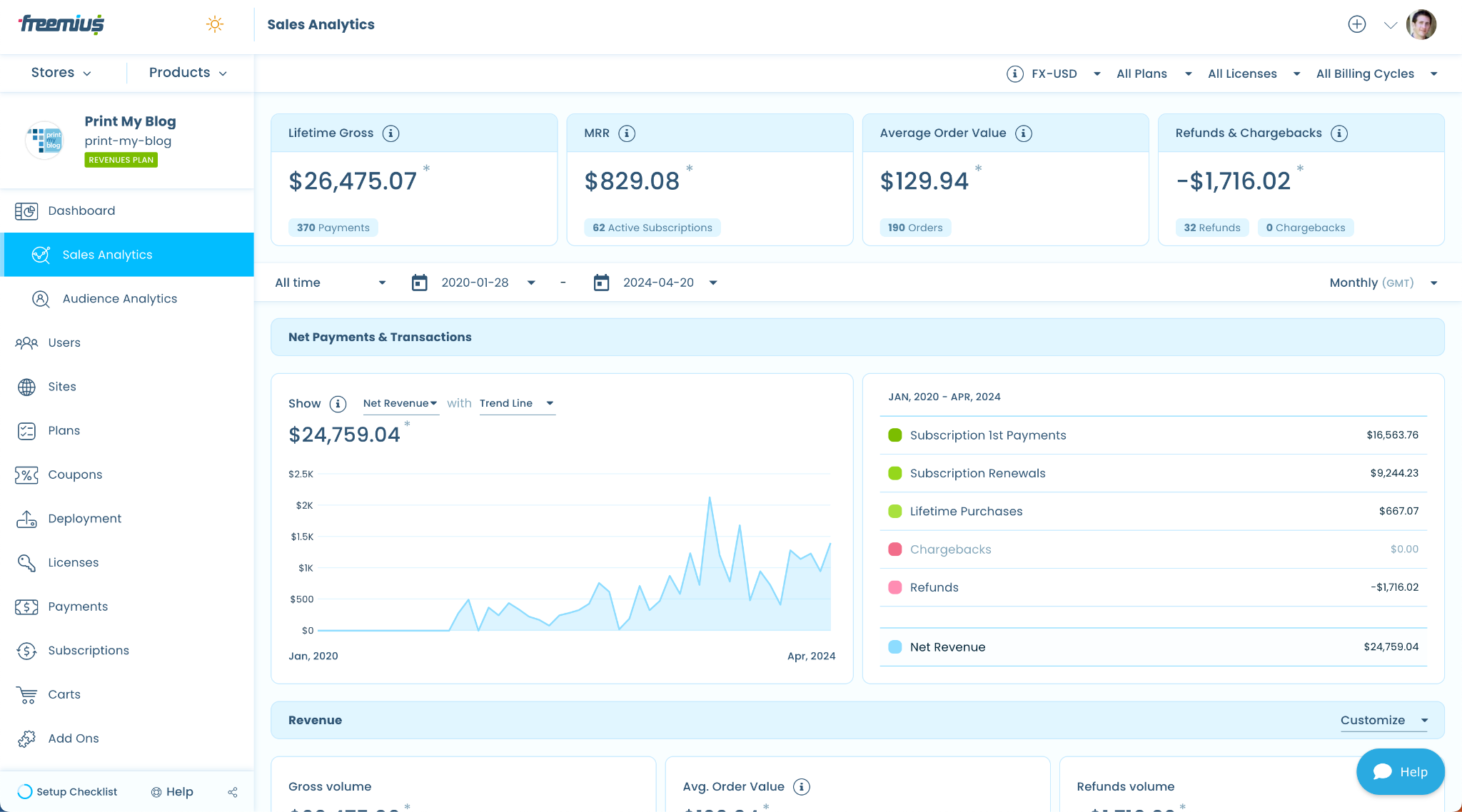
Have you seen any other noteworthy results or success metrics since joining Freemius?
As part of my transparency reports, I’ve been tracking:
- The opportunity cost of making the plugin (the amount I would have charged someone if I were being hired to work on it).
- Income.
- Active installs.
I put the data into an ugly Microsoft Excel graph and it looks like this:
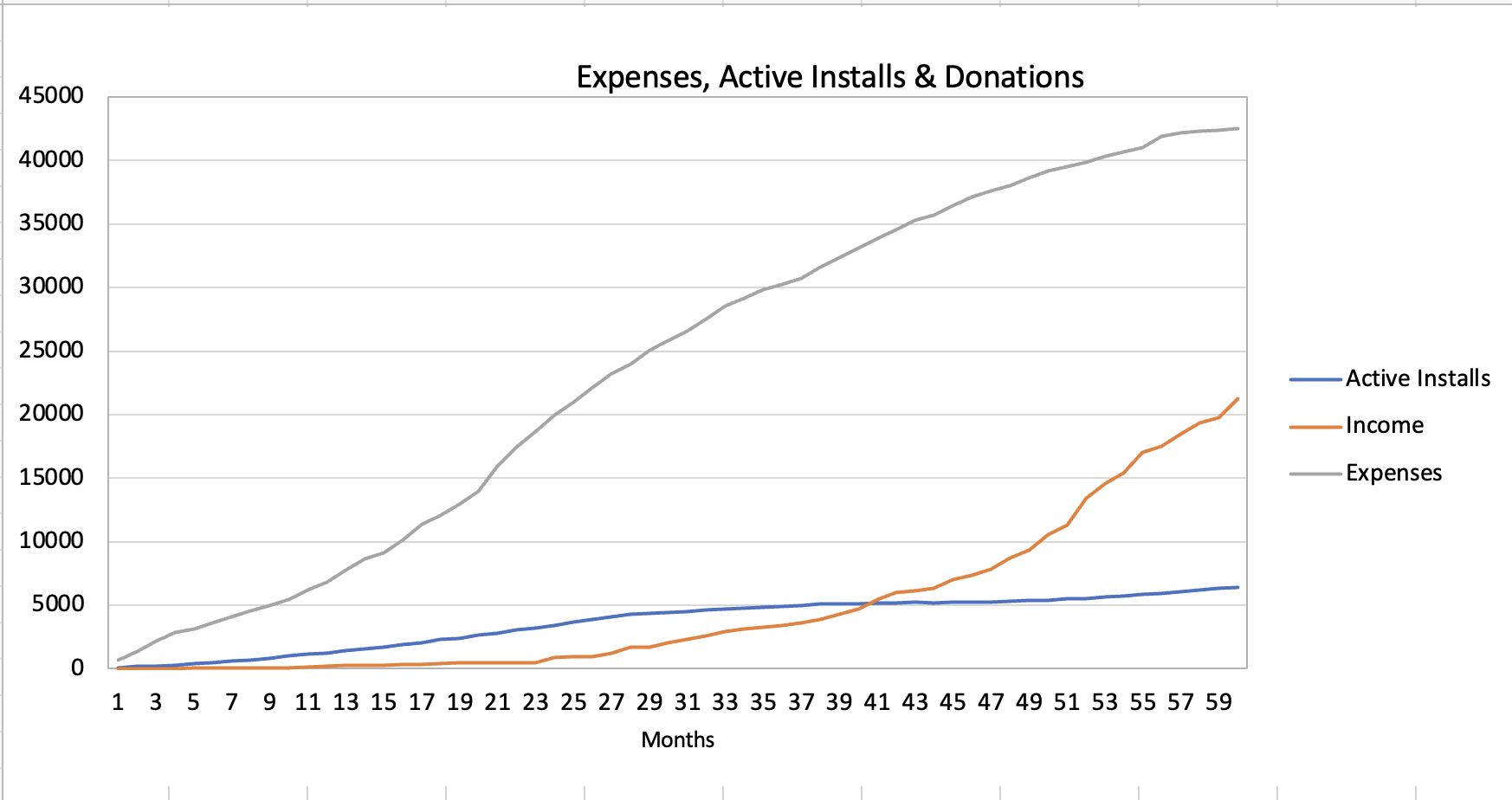
The x-axis is the number of months since I launched the plugin at the end of 2018. I started working on the paid version around Month 20.
You’ll see that my expenses (which mostly constituted my time) went up during the year I was building Print My Blog.
But when it finally launched around Month 27, income was clearly on a different trajectory. This was when I launched with Freemius, and I’d also just received a (random) big donation. Also, the amount of time put into the product has actually slowed down since Month 33, and the past 4 months especially.
In addition, here are some selected sales stats from the Freemius Developer Dashboard for the last year: 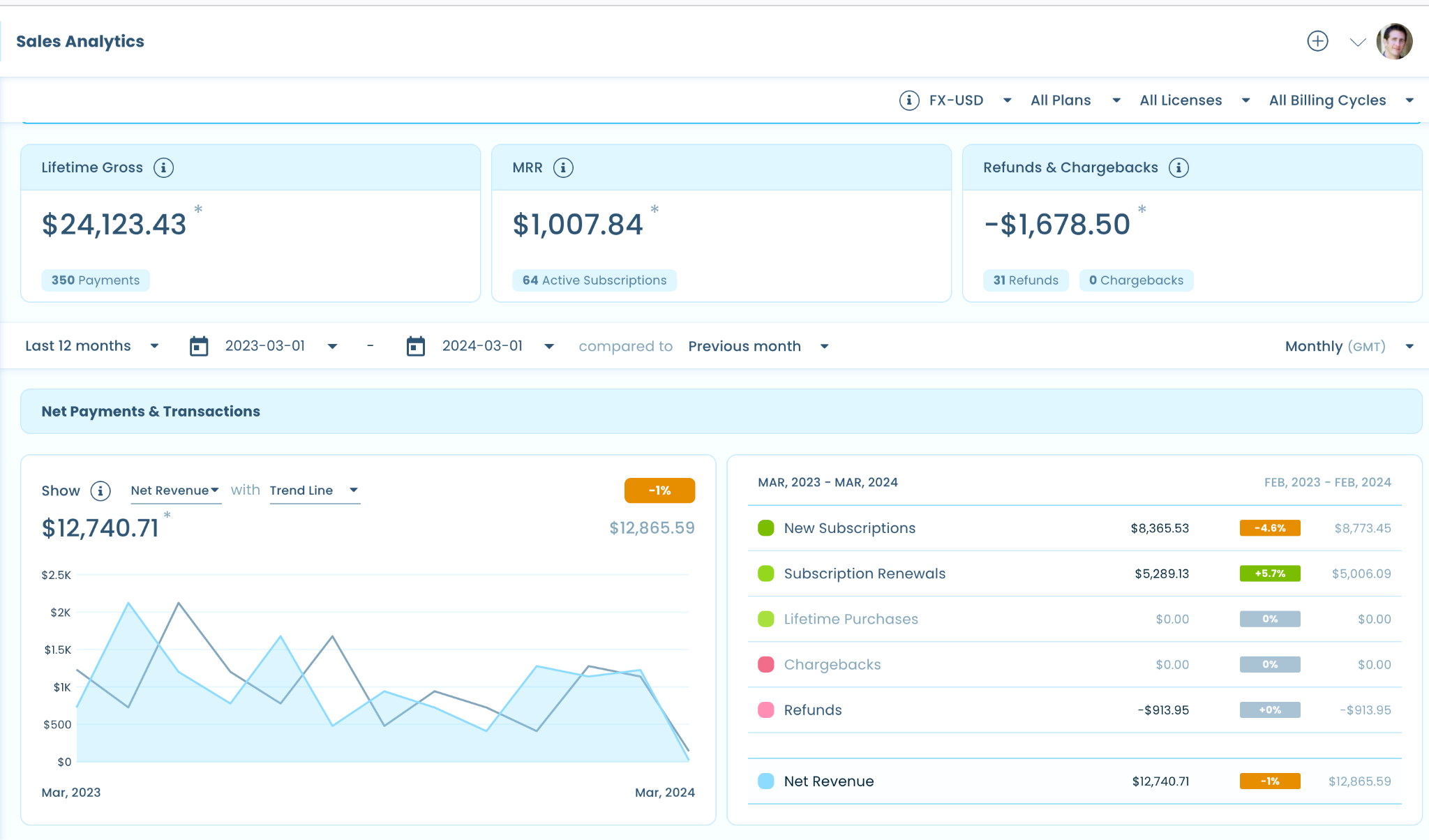
Interestingly, subscription renewals have provided as much income as new subscriptions. And, despite not having as much time to put in over the last year, income is still climbing 📈
Glad to hear it! How’s your experience working with the Freemius support team been?
Very responsive support. Sure, there are mistakes, but they own and fix them instead of pretending the mistakes never happened and making you question your sanity.
What’s your golden nugget of wisdom for newbies?
Go volunteer at local WordPress meetups, WordCamps, WordPress core, etc.
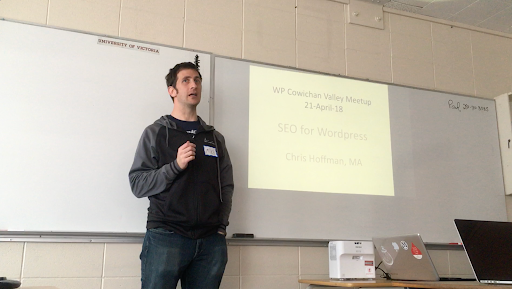
Try to help out. You’ll learn a ton about real users’ needs, the technology, best practices, and make connections that are essential to getting your name out there.
Having done that for even just a few months, your efforts to start your own software business will be way more fruitful.
What are your plans for Print My Blog and your business? Will you be headed to the presses 😉 with new ideas any time soon?
Haha, thanks for the pun.
The next big feature is making more professional designs for front-end printing.
For example, displaying a button on a post to download a PDF that looks just like a magazine or news article with your company logo and contact info in the footer. Maybe even a two-column layout with images floating to the edge of the columns, all in a consistent design regardless of which browser the visitor is using.
Print My Blog can currently do that, but right now it’s only site admins who can use it. The “print buttons” shown to site visitors don’t look quite so good yet.
Thanks for your time, Mike, and we wish you well in the future! Before you go, please drop your social handles so that people know where to find you.
You can follow me on Twitter.








